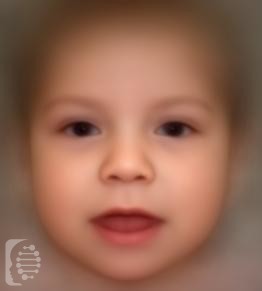What is Beckwith-Wiedemann syndrome?
Beckwith-Wiedemann syndrome is a genetic and congenital (present at birth) overgrowth disorder that leads to a predisposition to tumors, and in some cases cancer.
A large body size (macrosomia) is characteristic of this rare disease.
Its severity varies between individuals, and while it is thought to occur in 1 in 11,000 births, this figure may actually be higher due to underdiagnosis of the syndrome in less severe cases.
This syndrome is also known as:
BWS; EMG Syndrome; Exomphalos-macroglossia-gigantism Syndrome; Wiedemann-Beckwith Syndrome; WBS
What gene change causes Beckwith-Wiedemann syndrome?
Changes to the genes in chromosome 11, specifically on the region of the chromosome known as 11p15. In 85% of cases, the change or mutation is spontaneous, with no known family history. In 15% of cases the condition is inherited and passed from parent to child.
In some cases, a genetic syndrome may be the result of a de-novo mutation and the first case in a family. In this case, this is a new gene mutation which occurs during the reproductive process.
What are the main symptoms of Beckwith-Wiedemann syndrome?
The main symptoms of Beckwith-Wiedemann syndrome include a large birth weight and length. As well as a red birthmark on the forehead or eyelids, and creases in the earlobes.
A large tongue, also known as macroglossia is also characteristic of the disorder. As is overgrowth on one side or one part of the body.
Other health conditions associated with the syndrome include defects in the abdominal wall, causing hernias, enlarged abdominal organs, and a high predisposition to childhood cancers.
Possible clinical traits/features:
Autosomal dominant inheritance, Anterior creases of earlobe, Melanocytic nevus, Wide mouth, Overgrowth, Overgrowth of external genitalia, Pancreatic hyperplasia, Omphalocele, Polycystic kidney dysplasia, Enlarged kidney, Exocrine pancreatic insufficiency, Malar flattening, Congenital diaphragmatic hernia, Cleft palate, Coarse facial features, Diastasis recti, Cryptorchidism, Cutis laxa, Dandy-Walker malformation, Abnormality of the helix, Abnormality of the adrenal glands, Abnormality of the ear, Abnormality of periauricular region, Cardiomyopathy, Cardiomegaly, Accelerated skeletal maturation, Adrenocortical cytomegaly, Adrenocortical carcinoma, Abnormality of the tongue, Asymmetric growth, Apnea, Hemihypertrophy, Hepatomegaly, Hepatoblastoma, Gonadoblastoma, Prominent occiput, Hypothyroidism, Hypoglycemia, Hypertrophic cardiomyopathy, Umbilical hernia, Sarcoma, Urogenital fistula, Proptosis, Splenomegaly, Tall stature, Nephropathy, Neuroblastoma, Neurological speech impairment, Neonatal hypoglycemia.
How is it diagnosed?
To find out if someone has a diagnosis of Beckwith-Wiedemann, it is important to have a consultation and evaluation with a clinical genetic specialist. Specialists may also suggest specific genetic testing or other types of tests to help reach a diagnosis. FDNA’s AI technology can help speed up the diagnostic process by analyzing facial features and other health information.

